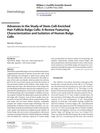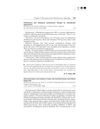Search
forLearn
5 / 23 resultslearn Stem Cell Factor
learn Beta Polypeptide
learn sh-Polypeptide-7
learn GHK-Cu
a copper peptide showing promise in both regrowth and reversing gray hair
Research
5 / 1000+ results
research Advances in the Study of Stem-Cell-Enriched Hair Follicle Bulge Cells: A Review Featuring Characterization and Isolation of Human Bulge Cells
Scientists have made progress in understanding hair follicle stem cells, identifying specific genes and markers, and suggesting their use in treating hair and skin conditions.
research The Developmental and Molecular Requirements for Ensuring That Human Pluripotent Stem Cell-Derived Hair Follicle Bulge Stem Cells Have Acquired Competence for Hair Follicle Generation Following Transplantation
Scientists found the best time to transplant human stem cells for hair growth is between days 16-18 when they have the right markers and growth potential.

research Characterization and Isolation of Stem Cell-Enriched Human Hair Follicle Bulge Cells
Researchers successfully isolated and identified key stem cells in human hair follicles, which could help develop new skin and hair treatments.
research Characterization and Isolation of Stem Cell-Enriched Human Hair Follicle Bulge Cells
Researchers successfully isolated and identified key markers of stem cell-enriched human hair follicle bulge cells.
research Canine Follicle Stem Cell Candidates Reside in the Bulge and Share Characteristic Features with Human Bulge Cells
Canine hair follicles have stem cells similar to human hair follicles, useful for studying hair disorders.
Community Join
5 / 1000+ resultscommunity UVA researchers discovered stem cells that plays a crucial role in hair growth - We are closer than ever to the cure!
Researchers at the University of Virginia discovered a new group of stem cells in hair follicles that could potentially restore hair growth. The findings suggest that activating these stem cells might offer a new way to combat hair loss, though practical treatments are still years away.
community PP405 Won't Work Long Term: Hair Follicle Damage Due to Abuse of the ISR System
PP405 may damage hair follicles if used long-term, suggesting cycling might be necessary. Combining it with finasteride could help maintain hair growth.
community Finally, some real breakthroughs. A comparison of the two leading baldness treatments: PP405 versus ABS-201
PP405 and ABS-201 are promising treatments for male pattern baldness. PP405 shows rapid hair growth in human trials, while ABS-201 shows significant regrowth in animal studies but is still in early human trials.

community Compressed part of research of theory of androgenic/anabolitic balance. AGA h-responders analytic. Theory of physio-metabolitic method of anti AGA treatment
The treatment for androgenetic alopecia involves using finasteride and minoxidil with intense exercise and cold exposure to boost metabolism and reduce androgenic effects, potentially leading to hair regrowth. This approach may activate biological pathways for improved hair and overall health.
community HairClone developing cell replacement treatments for Hair Loss
HairClone is developing cell replacement treatments to rejuvenate and generate hair follicles, and has launched a crowdfunding campaign. A user expressed skepticism about the need for crowdfunding.